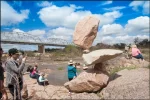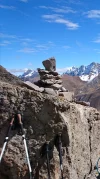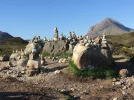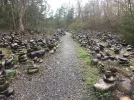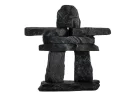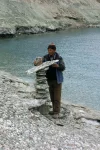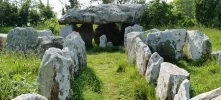I think this is the crux of it. I appreciate both points of view. The Camino is big; it contains multitudes. My Camino definitely has space for wilderness with minimally touched landscapes. It also has room for landscapes shaped by the human inhabitants and the pilgrimage and the pilgrims who walk it (which, at least on the Frances, quantitatively probably makes up the majority of the Camino, as anyone who has walked through the meseta can attest).
@David Tallan, I see these two as almost the ends of the spectrum - I don't see the issue as binary. It isn't just one or the other, but a broad spectrum between these two positions. On one end might be art, although it might extend into edgy issues like graffiti - clearly non-functional, but at its extremes disruptive, inelegant, and unappealing. The other end might be wilderness, and the preservation of this for the future for any number of reasons. In between there are a variety of things that might be called functional, although I am not sure that is is necessarily the best word to use.
What to I mean by this? Well there are all sorts of human use of the environment that are based in functional needs. We need to survive in this world, but we don't just need to survive, we also need to live and enjoy doing so. We farm, build towns, make art, play music and compete in sport. We want to move around our world, not just to bring farm goods to market, but to bring raw materials to factories and then for our own pleasure in discovering the world around us.
So what? Let me suggest that these two ends - art and ecological preservation - have to be resolved in everything we do across that spectrum of human use.
We like elegant things - art or music for its own sake, design that is both pleasing to look at but functional in use, a pretty garden to relax in where we can listen to the bird song in the morning. And this is not just about good design and pleasing implementation in our towns - it goes to the way we build and decorate our rural landscapes as well. To be Camino specific, finding pleasing designs in roadside signage and way markers is a nice change to the standard concrete majone, and I find it lifts my spirit a little to know someone has done something a little out of the ordinary for us pilgrims.
At the same time, and I am accepting this proposition, we now want our lives to do as little damage and to inflict as small a cost as possible on our natural environment. I realise most of us could point to examples where this is clearly not a universally accepted position, and tremendous damage has been and is still being done. Worse, some of it will last long into the future, and be a blight for our grand-children and beyond. But I think we are generally getting better at demanding that the environmental impacts are considered just as important as other considerations. We can make ethical investments in companies with good environmental credentials and pressure governments. More, we can practice it in our own lifes - and that includes walking the Camino so that we minimise any damage we do.






